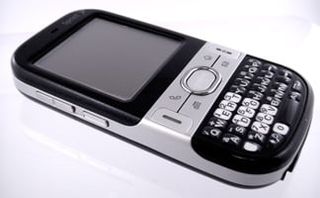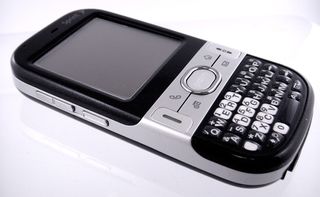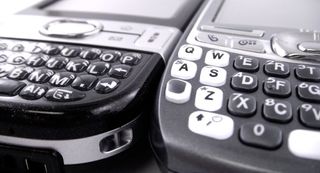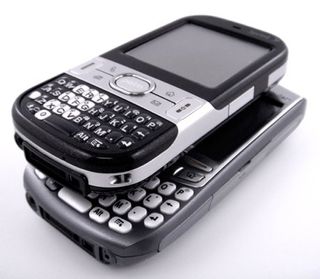

(Editor's Note: Malatesta remembers that Palm has claimed that they intend to share hardware between their PalmOS devices and their Windows Mobile devices. The latest and coolest PalmOS hardware? The Centro. Will the Treo 800w sport similar improvements?)
Recently in the TC forums and on WMExperts, there has been a lot of discussion of what the upcoming Palm Treo 800w will have for hardware and what features it will contain. No doubt that many will judge the device just on pure numbers e.g. how much memory, how fast a processor and, if like the recent AT&T Tilt, it has all the technological bells and whistles that could be crammed in.
While the hardware specs are certainly important, I'd also argue how that hardware is implemented and integrated in the OS is just as significant, if not more so.
Read on for more of Malatesta's thoughts!
Case in point: Bluetooth. Palm Treos all have version 1.2 and also have the notorious reputation of being some of the worst implementations of this popular standard. Blame it on the hardware or blame it on the BT software stack, either way Treos are not known for their stellar BT performance. However, if you look at the new Sprint Mogul (ppc-6800), it has BT 2.0 -- surely an upgrade from the ubiquitous 1.2 standard that is out there. But here too HTC drops the ball a bit as many report the usual: connection and static issues, something that was partially addressed in the recent HTC ROM update.
Lesson learned: just because it's the latest version of something doesn't mean it works well.
So how is Palm doing in this regard with their latest device, the Palm Centro? I recently picked one up and one thing is clear: Palm seems to have finally nailed down hardware performance and integration. Will this new found hardware improvement carry over to their upcoming WM Treo 800? Too early to tell, but the Centro inspires confidence where it was previously lacking. Read below for my review of the new Centro hardware and why this bodes well for WM Treo users.
Get the Windows Central Newsletter
All the latest news, reviews, and guides for Windows and Xbox diehards.
Keyboard

Changes: The Centro's keys are slightly smaller and don't have the "smile" layout of previous Treos. They are also not hard plastic buttons but rather soft and rubbery. The keys are printed as a single sheet, as opposed to poking through the plastic shell.
Opinion: Despite the size, the new style keyboard is very nice and a keeper. My thumbs no longer get sore at the tips from banging on hard plastic keys and I have to say, I'm delighted with the new keyboard.
D-pad/Soft buttons
Changes: The new D-pad has a large center button, in fact much larger than the current dimple button that some find hard to press for the "Enter" function. I was concerned when I first saw the change as I felt the current D-pad was actually the most comfortable I've used on any WM device (the HTC 6700 hands down being the worst). Also the new Soft buttons e.g. the Green and Red phone buttons are now flat and polished.
Opinion: The new design choice is preferable. The D-pad on the Centro is very smooth, requires little effort and is even gentler to push—if the expression "like buttah!" ever meant anything, it applies to the new hard keys of the Centro. The rest of the soft keys are also large enough for your thumb and I find easier to toggle than my Motorola Q, which can be quite difficult to push at times.
Bluetooth
Changes: The Centro still has BT 1.2 (although it may actually have BT 2.0 + EDR)
Opinion: Bluetooth on the Centro is a finally a pleasure to use. I've had no dropped calls, little static and the call quality, especially on my Blueant Z9, was top notch—even better than my Treo 700wx. I'm not sure if the hardware radio is different or the software is enhanced, but it looks as if Palm finally figured it out.
Camera
Changes: The Centro still has the same measly 1.3MP camera as the 7xx series.
Opinion: Once again, in comparison to the Treo 700wx's, it is sharper, brighter and has better contrast. For 1.3MP it's actually one of the best I've seen and I could only imagine how a 2+MP camera may look.
Cell Radio (reception)
Changes: Unknown
Opinion: Improvement. As many have attested in the forums the Centro has great reception. I can make calls in my apartment in some spots where before on my 700wx I could not.
Speakers (ear & rear)
Changes: Unknown
Opinion: The rear speaker on the Centro, though still a mono it has quite fantastic clarity and is very loud. I'd liken it to the Motorola Q and can easily say it bests any of the Treo 7xx series by a long shot. Same with the earpiece: call quality has a nice warm sound to it and volume quite ample (though as usual, some may prefer even louder).
Screen
Changes: Removed blank border around the screen edge
Opinion: The Centro's screen is quite impressive. Though the smallest yet (2.2" versus 2.6" on the Treo line), contrast is high, resolution looks great and now without the border, the full screen real estate is finally used.
Miscellaneous
Screen Protector: The Centro's a built in, protective layer over the screen appears to be a slight improvement over the protective layers on Treos. In turn, there is no included screen-protector sheet (which was always junk anyways). Like a ringer switch, some things are just so obvious and implementing a built in screen protector is one of them. Nice to see Palm filing in these gaps.
Battery Cover: Though some have had problems with removing it, the new battery cover is very flush with the device and eliminates any chance of it accidentally popping off due to hitting of the release button (since there is no release button). The Centro's back feels solid and clean with the device contours.

Size: Despite what you may think form seeing pictures of the Centro, it is very tiny. It's so narrow that my Arkon Universal vehicle mount can't hold it (the clamps don't reach the sides!). I don't think we'll see the new Treos as small as the Centro, but it may be close. The good news is they maintain very good ergonomics i.e. it feels great in the hand as opposed to the more awkward Motorola Q.
Power Saving: The Centro has dimmer keyboard lights than all the other Treos, which is a good thing since the Treo lights were often too bright. Palm also put in an option to turn of the screen automatically during a phone call, saving precious battery life. Finally, even though it has only an 1150mah battery, the Centro's hardware seems to manage it quite well. It's nothing mind blowing, but most seem to be quite pleased despite negative expectations.
LED: Okay Palm, you fail on this one though. The LED is supposed to blink for new voicemail or SMS but it does not, so fix it on the Centro and have it for the WM Treo!
Conclusions
What makes this review interesting is this: the $99 Centro has virtually the same hardware specs as the more expensive Palm 7xx line, yet performance of that hardware is remarkably different. The Centro easily beats all other Treos in every category in hardware: camera, screen, speakers, reception, keyboard, buttons and even BT. (Of course this is the least we should expect from smartphone manufactures, but unfortunately it's not uncommon to find a company taking 2-steps forward and 1-step back on devices.)
Maybe it has something to do with Palm being reportedly heavily involved with the Centro's hardware design or maybe it's on Inventec's end (the OEM of the Centro)—either way, it's a very nice change. If the leaked Treo 800w mockup image is accurate, it looks like Palm will be keeping the Centro and Treo lines separate in terms of style, but hopefully this improved quality of hardware performance will carry over for WM aficionados.

